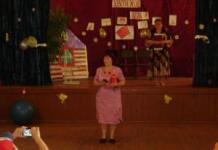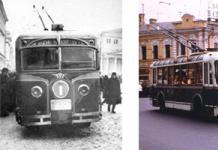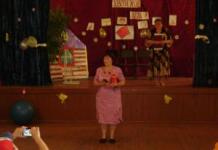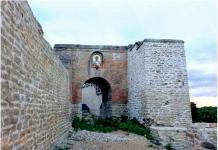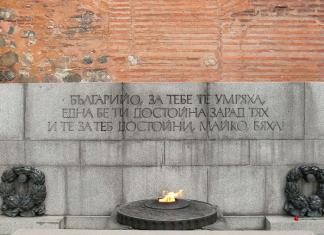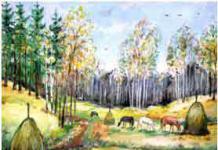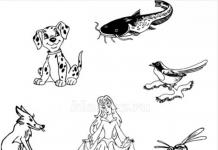History of creation and appearance
In the 19th century, England began to rapidly build up its technical power, expand international trade and political ties, so by the end of the century there was an urgent need to build a new crossing over the Thames. And in 1884 the project of the bridge by Horace Jones was approved. The design is in perfect harmony with the overall architectural appearance of the famous Tower of London.

Construction began in 1886, namely on June 21st. The construction was fully completed after 8 years, and its opening took place in 1894, on the last day of June, with the participation of Prince Edward and his wife Alexandra.
The bridge has a total length of 244 meters, in the middle there are two towers, each 65 meters high, between them there is a 61-meter span, which is a drawbridge. This allows ships to pass to the city berths at any time of the day or night. The powerful hydraulic system was originally a water system powered by large steam engines. Today the system has been completely replaced by oil and is controlled by a computer.

Fully extending the bridge, lifting each wing up to 83 degrees, takes less than two minutes. While public transport is forced to wait for the passage of the ship, pedestrians could move through specially equipped galleries. However, quite quickly after the opening, pickpockets and girls of easy virtue began to actively hunt here, so the city administration closed the crossings in 1910.
Pedestrians only got the opportunity to pass through them again in 1982. At the same time, a paid museum of the history of the building was equipped here, as well as an exciting observation deck for tourists. You can get here by elevator (two elevators in each tower) or by steps. The glazed galleries offer simply stunning views of the city.
Video: Building the Tower Bridge
Initially, Londoners showed the same contempt for the new architectural element as Parisians did for the Eiffel Tower, considering the towers old-fashioned and ridiculous.

At the beginning of the twentieth century, namely in 1912, the British pilot Frank McClean managed to fly his biplane between the bridge towers in the space between the upper and lower tiers. A similar incident occurred in 1968, when Alan Pollock, a RAF, flew in a fighter jet in the same place, protesting against the political actions of the government. After the incident, he was immediately arrested and dismissed from service.
During World War II, German air forces made every effort to destroy the most important structures in the capital of Great Britain. Tower Bridge was also among the main targets, however, fortunately, the structure remained intact.
A very famous incident in the history of the bridge occurred in 1952, when a Tower Bridge maintenance worker forgot to warn the city bus driver to spread the wings of the structure. The driver realized this when he had already entered the bridge and saw the rising span. He made an extremely bold decision - to pick up the highest possible speed and jump to the other side. This desperate maneuver was crowned with success, thanks to which all passengers survived. For his courage, the city council even gave the driver a small cash bonus.



Interesting story happened in 1997, when the motorcade of the then US President Bill Clinton followed the motorcade of British Prime Minister Tony Blair. The latter successfully crossed the Tower Bridge, but Clinton's cars were forced to be delayed because of the breeding that had begun. It was not possible to urgently bring the bridge down to avoid diplomatic inconsistencies, since river transport at the legislative level has priority over land transport. Therefore, the head of the United States had to wait until the ship completely passed under the bridge.
Few people know that the towers are not just a decoration of the bridge - they are powerful steel supports, lined with stone to protect against corrosion and the influence of the external environment.
Inside the towers there are 2 lifts - one for the ascent and one for the descent. Each of them is capable of picking up to 30 people at a time.

Any vessel with a height of 9 to 42 meters can apply to open the bridge. This can be done one day before the expected passage. At the same time, the owner of the ship does not need to pay for this operation - such events are financed by the city's charitable organization.
Tower Bridge is very often confused with London Bridge, located upstream of the Thames. In London, there is even a very popular legend about how in 1968 American businessman Robert McCulloch bought the old London Bridge, which was to be demolished, thinking that he was acquiring Tower Bridge. The bridge was dismantled and transported to the United States, and the stone blocks were installed as cladding in the reinforced concrete supporting structure of the bridge, installed along the canal near Lake Havasu City, Arizona.
Tower Bridge divorceInformation for tourists
The bridge is located at Tower Bridge Exhibition, Tower Bridge Road, London SE1 2UP, UK. You can get here by metro - London Bridge or Tower Hill stations, city buses No. 15 and 42, as well as by taxi.
You can visit the Tower Bridge galleries from April to September from 10.00-18.00 (entrance until 17.30), from October to March 9.30-17.30 (entrance until 17.00), on January 1 the museum opens at 12.00, closed on December 24-26.
Help translate into English. Tower Bridge in London is a drawbridge located in the heart of the capital of Great Britain.It is located in a great location above the River Thames, right next to the Tower of London.
Tourists often confuse it with London Bridge, which is upstream.
The Tower Bridge was commissioned in
1894 year. The bridge is considered one of the main symbols of London and
Great Britain, standing on a par with the famous Big Ben.
now expect opportunity, responsibility, respect-and fun.
Youth is a time for fun. In one American playground in Florida, there are basketball courts and volleyball nets. Inside, there are bright colors, Nerf guns and a games room with pingpong. This is not a school, but the offices of CapitalOne, one ofAmericaslargest credit-card firms. The firm gives each department a monthly fun budget. The same sort of thing can be found across corporateAmericathese days. The kids have taken over. It is technology that drives business today, and dot.com culture is everywhere. The young are now the rising power in the workplace. Take Microsoft, a business with 40,000 mostly young employees: the dress code is anything goes as long as you´re clean. People wear shorts and have blue hair - sometimes even in management. The typical workplace scene features mid-afternoon hockey, video games and techno music on headphones. Companies want to attract and keep a younger workforce because of its technical skills and enthusiasm for change. So youth culture is becoming part of office culture. This may be no bad thing. Along with the company fun budget come things that matter more deeply to young people: opportunity, responsibility, respect. In the past, it was the middle-aged who ruled. At work, gray hair, years of loyal service and seniority counted most. Now things are changing. Older workers will not disappear, but they will have to share power with the young. In the old days companies grew slowly; with success came conservative corporate values. Now the world´s largest firms can crash at any moment. The pace of change is increasing. And change favors the young: they learn and relearn faster and will risk more to try new things. Many companies no longer have seniority-based hierarchies. People can get to the top faster. They don´t have to spend years showing respect for their superiors. It is more important that they are able to understand e-business and have the courage to ask why? Loyalty to the company is less important than talent. Employees stay only when there are challenges and rewards. Changing jobs frequently is now a sign of ambition and initiative. All this is a good thing. Young people are at their most creative stage in life. Now they have more opportunity to put their ideas and energy into practice.
Tower Bridge was officially opened by the Prince of Wales (not the current one obviously) over 120 years ago. This special bridge is one that many associate with London. Anyone who sees this Bridge immediately knows that it’s in London (so it’s often the first thing shown in stock footage about London). It’s certainly a beautiful bridge. The Bridge is celebrating its birthday today - it was opened on this day in 1894 by the Prince of Wales, (the future King Edward VII) with much celebration.
So, with much fanfare, here are 10 facts and figures you probably didn’t know about the iconic Bridge.
It's Not Actually Called London Bridge

It's a common misconception that the bridge is called London Bridge (and that there’s a song about it). This is actually called Tower Bridge, London Bridge is further down the river and is much more utilitarian.
There Were Over 50 Designs for the Bridge
When the decision was taken to build a bridge, a design contest was held to choose the best design. Over 50 designs were submitted - some close to what was built and some that were absolutely bonkers. The evaluation of the designs was surrounded by controversy, and it was not until 1884 that a design submitted by Sir Horace Jones, the City Architect (who was also one of the judges), was approved. ...
You Can Watch the Bridge Live, 24 Hours a Day
There's a live HD Webcam trained on Tower Bridge 24 hours a day. ...
What's in a Name?
Tower Bridge isn’t named so because it is one of the few bridges on the Thames that features towers. In fact, it's named after the Tower of London which is located on one side of the Bridge. The Tower of London also influenced the final design.
Raw numbers
The bridge is 800 feet (244 m) in length with two towers each 213 feet (65 m) high, built on piers. The central span of 200 feet (61 m) between the towers is split into two equal bascules or leaves, which can be raised to an angle of 86 degrees to allow river traffic to pass. The bascules, weighing over 1,000 tons each, are counterbalanced to minimize the force required and allow raising in five minutes.
Ladies of the Night

The high-level open air walkways between the towers gained an unpleasant reputation as a haunt for prostitutes and pickpockets; as they were only accessible by stairs they were seldom used by regular pedestrians, and were closed in 1910. In 1982 they were reopened as part of the Tower Bridge Exhibition, a display housed in the bridge's twin towers, the high-level walkways and the Victorian engine rooms.
Bridge openings
The bridge usually opens at least once a day and if you’re a boat that requires an opening, you need to book it in advance. The bascules are raised around 1000 times a year. River traffic is now much reduced, but it still takes priority over road traffic. Today, 24 hours ’notice is required before opening the bridge. There is no charge for vessels. You can see when the Bridge will open next on its website. It’s quite an amazing sight!
Crossing the thames
The bridge is crossed by over 40,000 people every day and it is still a busy and vital crossing of the Thames. The bridge is on the London Inner Ring Road, and is on the eastern boundary of the London congestion charge zone. (Drivers do not incur a charge by crossing the bridge.) To maintain the integrity of the structure, the City of London Corporation has imposed a 20 miles per hour (32 km / h) speed restriction, and an 18 ton weight limit on vehicles using the bridge. A camera system measures the speed of traffic crossing the bridge, utilizing a number plate recognition system to send fixed penalty charges to speeding drivers. So, if you ever get to cross, don’t speed across - enjoy it as a leisurely pace or else you’ll get a ticket (even in a rental car!).
Victorian Engineering
Despite having an architectural design that makes the bridge look old, it is in fact a very modern piece of architecture as construction of the bridge began in 1886 at the height of the Victorian era. It was made of steel and consisted of two towers built on piers. The central span was split into two equal bascules or leaves and the towers were clad in stone to give a more “traditional” appearance to match nearby Tower of London. Tower Bridge is basically a steel frame clad in stone, a design principle not that dissimilar to modern buildings.
Concrete and Steel

More than 400 workers helped to build the bridge and over 70,000 tons of concrete were sunk to the bed of the River Thames to support the bridge. 11,000 tons of steel was used to construct the framework for Towers and Walkways.
Visiting the Bridge: It costs nothing to visit, cross and admire the bridge. There is a museum on site called the Tower Bridge Exhibition that goes into the history of the bridge and they occasionally have special exhibitions. The museum has an admissions charge. ...
TOWER BRIDGE IN THE CENTER OF LONDON OVER THE TEMZA RIVER, NEAR THE TOWER OF LONDON. SOMETIMES IT IS CONFUSED WITH THE LONDON BRIDGE LOCATED ABOVE UP THE CURRENT. OPENED IN 1894. ALSO IS ONE OF THE SYMBOLS OF LONDON AND BRITAIN. Tower Bridge


In the 19th century, England began to rapidly build up its technical power, expand international trade and political ties, so by the end of the century there was an urgent need to build a new crossing over the Thames. And in 1884 the project of the bridge by Horace Jones was approved. The design is in perfect harmony with the overall architectural appearance of the famous Tower of London.


The bridge has a total length of 244 meters, in the middle there are two towers, each 65 meters high, between them there is a 61-meter span, which is a drawbridge. This allows ships to pass to the city berths at any time of the day or night. The powerful hydraulic system was originally a water system powered by large steam engines. Today the system has been completely replaced by oil and is controlled by a computer. Few people know that the towers are not just a decoration of the bridge - they are powerful steel pillars, lined with stone to protect against corrosion and environmental influences. Inside the towers there are 2 lifts - one for the ascent and one for the descent. Each of them is capable of picking up to 30 people at a time.

Tower Bridge-Bridge History
If there was ever a bridge that you can call "historic", it's the Tower bridge, which is a combined bascule and suspension bridge in London, England over the River Thames. It is close to the Tower of london, which gives it its name. It has become an iconic symbol of the historic city of London.
Plans for the Tower Bridge were devised around 1876 when the east of London became extremely crowded and a bridge across the Thames in that area of the city seemed a necessity. It would take another eight years - and lots of discussions about the design - before construction of the bridge started.
The bridge, designed by city architect Horace Jones in collaboration with John Wolfe Barry, would eventually be completed in 1894. Five contractors and nearly 450 workers were involved in the construction of the 265 meter long bridge. It took 11,000 tons of steel to build the framework. At the time many people disliked its Victorian Gothic design, but over time the bridge became one of London’s most famous symbols.
The proximity of the harbor and its location in the direction of the sea required for the bridge to allow the passage of large vessels. Hence the decision to create a moveable bridge which can be opened to accommodate boat traffic. The mechanism to open the bridge is hidden in the two towers. Until 1976, when the mechanism became electrified, steam power was used to pump water into hydraulic accumulators which powered the engines.
Each deck is more than 30 meters wide and can be opened to an angle of 83 degrees. When opened the bridge has a clearance of almost 45 meters. It used to open almost 50 times a day but nowadays it is only raised about 1,000 times a year.
Bridge lifts are pre-scheduled (for cruise ships, etc) so visitors can check the bridge's website to find out when it will rise and lower.
Translating to Russian language
Bridge of History
The drawings for the Tower Bridge were drawn around 1876, when East London became crowded and a bridge over the Thames in this area of the city seemed a necessity. But eight more years passed - and there was a lot of discussion about the design before the construction of the bridge began.
The bridge, designed by the city's architect Horace Jones in collaboration with John Wolfe Barry, will eventually be completed in 1894. Five contractors and about 450 workers were involved in the construction of the 265-meter bridge. It took 11,000 tons of steel to assemble the frame. At the time, many people disliked its Victorian Gothic style, but over time, the bridge has become one of London's most famous symbols.
Mechanics
Picture caption: Tower Bridge raised
The proximity of the port and its location in relation to the sea is necessary for the bridge to allow the passage of large ships. Consequently, the decision to create a movable bridge that can be opened for the passage of yachts and ships. The bridge opening mechanism is hidden in two towers. Until 1976, when the mechanism became electric, steam power was used to supply water to the hydraulic accumulators that powered the motors.
Picture caption: Tower Bridge at night
Each wing of the bridge is more than 30 meters long and can be opened up to 83 degrees. When the bridge opened, the shutters rose 45 meters. The bridge was opened almost 50 times a day, but now it is only about 1000 times a year.
The bridge rises on schedule (for cruise ships, etc.) so overland users can check the bridge on the website to see when it will rise and fall.




